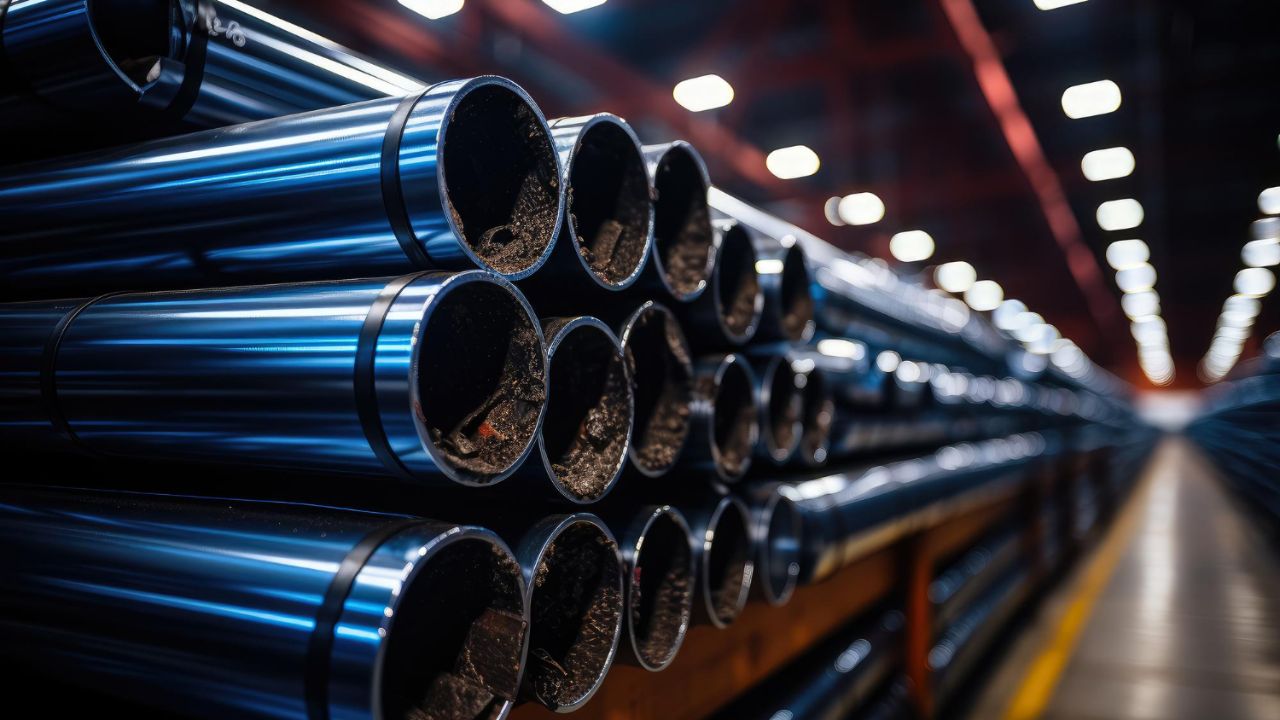Selecting steel pipes for construction and industrial and infrastructure projects demands careful decision-making to achieve safety standards operational efficiency and extended service life. The selection of appropriate steel pipes determines how well the project performs. High Speed Steel is commonly used to manufacture cutting tools like drills, turning tools, and milling cutters. This article explains five essential guidelines for selecting the most suitable steel pipes for their requirements.
Understand the Required Material Properties
Project managers must begin their steel pipe selection by grasping what material qualities the project requires. The range of steel pipe grades and types matches specific applications through their unique combination of strength properties and corrosion resistance and durability characteristics. The required tensile strength level of pipes depends on project conditions since extreme pressure and heavy loads need strong pipes but pipes exposed to environmental chemicals need corrosion-resistant materials. The selection of high-quality carbon steel pipes occurs frequently in general construction and pipeline projects yet alloy steels become necessary for specialized applications that need high-temperature or high-pressure environments. The selection of steel pipes requires knowledge about their future environmental exposure including underground burial extreme temperature usage or high-impact situations.
Pipe Dimensions & Wall thickness
Steel pipes need precise dimensions together with wall thickness to achieve functional performance and operational safety. The required flow capacity determines the pipe size and pipe wall thickness establishes both strength and durability alongside pressure tolerance. The pipe’s diameter together with wall thickness needs to match the precise flow needs of water distribution systems as well as gas pipelines and industrial operations. The required diameter of the pipe depends on the volume of fluid or gas that needs transport because high-volume operations require larger diameters while domestic or low-volume applications work with smaller diameters. The operating pressure of the system determines the appropriate wall thickness selection. A proper evaluation must determine how well the pipe will endure anticipated stresses because failure or deformation could potentially develop during long-term use.
Evaluate the Pipe Coating Options
The susceptibility to rust and corrosion of steel pipes becomes significant when these pipes encounter moisture or chemical exposure. A proper coating selection must occur to protect pipes from premature failure while extending their operational lifespan. The protective layer serves as corrosion prevention for the pipe structure while providing enhanced endurance in both environmental stressors and chemical threats. Steel pipes can receive protection through three main coating methods: galvanization epoxy coatings and polyurethane coatings. The protective zinc coating on galvanized steel pipes protects metal structures against corrosion thus creating their utility in outdoor and fluid applications. Epoxy coatings demonstrate superior corrosion resistance properties which make them suitable for demanding operational environments. The selection of a coating needs to match the exact environmental conditions where the pipes will be deployed.
Consider the Manufacturing Process
The manufacturing process for steel pipes determines both their final quality and their performance characteristics and production expenses. Steel pipes exist in two fundamental forms: welded pipes and seamless pipes. Welded pipes develop through steel plate connections but seamless pipes are produced from single steel billets which results in superior internal pressure resistance to prevent structural failure under tension. Seamless pipes find their optimal use in demanding applications that require high pressure and temperature because they deliver both strength and uniformity. Seamless pipes cost more than welded pipes do. Welded pipes remain affordable while offering suitable performance for various standard applications. The selection of optimal steel pipes depends on project-specific requirements that involve pressure levels temperature needs and financial limitations.
Certification verification
Mandatory industry standards and regulations must be verified for steel pipes before making a final selection. Manufacturers produce certified pipes according to established quality standards guaranteeing their safety performance levels. Tianjin United Steel Piping Co., Ltd, and other manufacturers provide certified pipes that meet standards from organizations including API, ASTM, and UL. Steel pipes that receive certification go through strength and durability and wear and corrosion testing to ensure long-lasting reliable performance. The use of properly certified pipes decreases the probability of needing expensive future maintenance or system breakdowns. When obtaining pipes from suppliers always verify they hold the essential certification that validates their suitability for both local and international standards.
Conclusion
Project success depends on selecting steel pipes through an assessment of material properties and pipe size together with coating options and manufacturing processes. Engineers together with contractors and project managers can make well-informed pipeline system decisions through careful evaluation of these five essential points. The use of high-quality compliant pipes from reputable manufacturers leads to project success as it provides low maintenance requirements alongside maximum operational efficiency.
